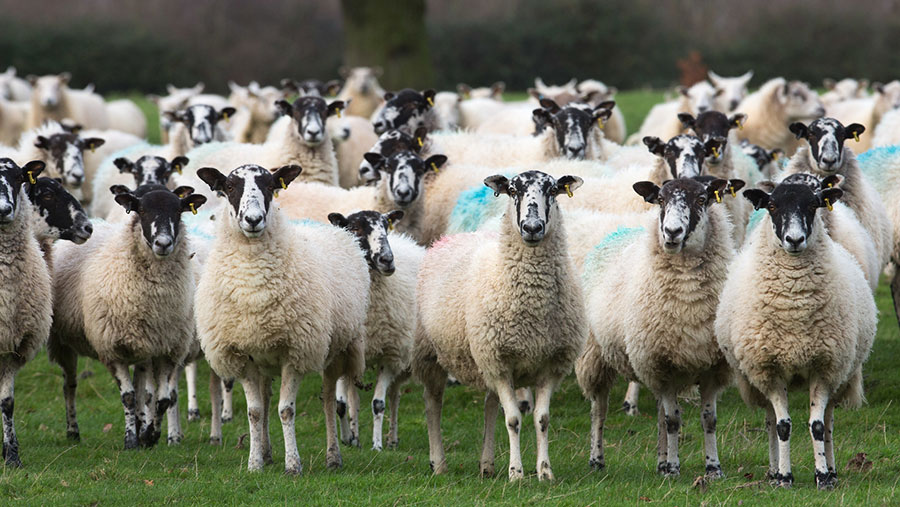Opinion: I’m keeping my sheep despite gloomy Brexit forecast
 © Tim Scrivener
© Tim Scrivener Aside from the weather and a royal wedding, Brexit remains high on the agenda of conversation in the UK.
This remains the same within the agricultural community, with pretty much everyone (rightly or wrongly) having an opinion on how the next few years will play out.
The sheep sector seems to be receiving the bulk of the somewhat pessimistic predictions, and rightly so, you could argue, with a third of lamb meat produced in this country being exported – the vast majority of which goes to the continent.
See also: Read more of Josh Dowbiggin’s columns
I wonder, is a blanket assessment for the future of the sheep sector a fair and balanced analysis of what is to come?
After all, we know that margins vary greatly across the sector, meaning some producers are far better prepared than others for the possibility that the Brexit process will negatively impact the domestic lamb price.
The old “that’s how Dad used to do it” mantra that some farmers still adopt will probably not be the right way to maintain a sustainable sheep farming business going forward.
Producers need to be able to understand that every penny spent has a purposeful and intended impact on the business if they want to survive the next decade.
According to AHDB, labour costs for bottom-third producers are more than double those of top-third producers, and purchased feed costs for bottom-third producers are almost four times those of top-third producers.
New approaches
This difference across the industry cannot be underestimated. There are several new approaches that some sheep producers have adopted to reduce the cost of production.
The uptake of low-input New Zealand-style systems has been huge, with many producers removing purchased feed costs, lambing outdoors and significantly reducing the cost of labour and veterinary inputs, all while maintaining lamb output.
Aside from cost reduction, the big output restraint for many producers is land, so maximising grass production allows for increased stocking density, improving enterprise output without the need for capital investment. This is an easy win for producers.
At the same time as reducing cost and maximising productivity, producers should make sure that the lambs they produce are what the market wants.
Hitting the specification every time is a sure-fire way to keep margins as wide as possible. However, E-grade lambs aren’t always profitable lambs.
Cost-saving fallacy
The belief that reducing costs will only reduce output is, in my opinion, a fallacy, and this is proven by the difference in margins across the sector.
Yes, low-cost systems may not achieve the top price for your lambs at the mart, but that’s irrelevant if it has cost you a small fortune to get those high-sellers.
Whatever happens to the lamb price over the next decade, the sheep industry has the tools and options to cope.
Below-average producers will most likely struggle, but there is still time for these producers to make changes to their businesses, in turn becoming fit for the future.
In my opinion, the producers that know where their costs lie and are producing what the buyers want aren’t just fit for the future, they could be sitting on a goldmine. And as for the predictions, plenty of those haven’t come true in recent times – just ask Hilary Clinton.
Somebody once told me that an expert is just someone who made three correct guesses consecutively, so for the time being, I’ll be keeping my sheep.
Lancashire lad Josh Dowbiggin, 21, is in his final year of studying agriculture at Harper Adams University. He runs a small flock of Easy Care ewes alongside his Ghyll Beck Hereford Stud business, importing and marketing Hereford semen and embryos from around the world.
